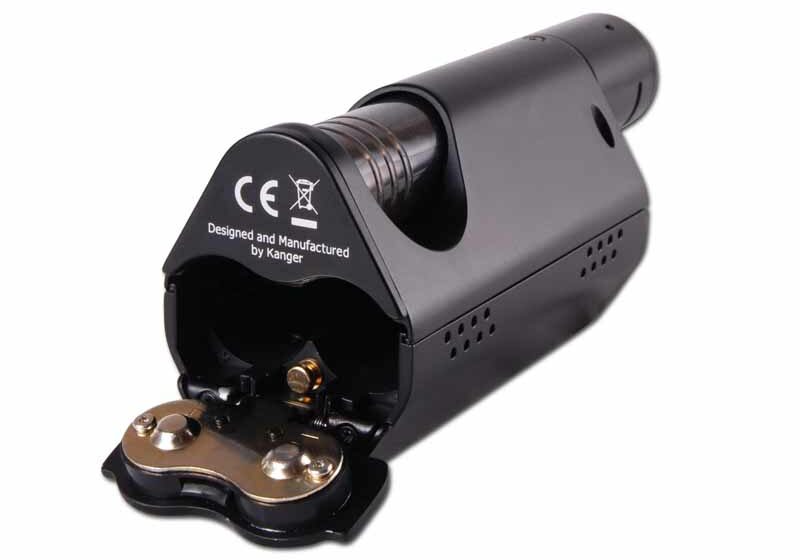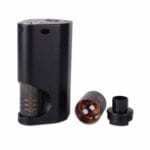Will Europe lead the vape space?
By Norm Bour
As of Aug. 8, 2016, the business of vaping in the United States became even more volatile and unpredictable. The U.S. Food and Drug Administration’s (FDA) deeming regulations mandated that any vapor products not on the market by that date would be required to undergo an expensive premarket tobacco authorization process.
The cost could be more than $1 million dollars per SKU, which caused a rush to get all “new” products on the market under the wire. And there would be no guarantee of approval.
Meanwhile, the EU implemented its revised Tobacco Products Directive (TPD2). Compared with the FDA restrictions, the TPD2 requirements are light. This begs the question: Is now the time to enter and expand into the European market? If you are a vapor professional with the potential to work internationally, your time may be at hand.
I spoke at three VapExpo events in Europe over a two-month period and visited the largest e-liquid manufacturer in Ireland. Sharing a stage in Amsterdam, Prague and Warsaw, Poland, was eye-opening and led me to believe that the European market may be leading the vape space over the next few years.
Differences and similarities
The FDA guidelines cover all products manufactured and sold within the United States. That makes it easy to administer, monitor and enforce. In Europe, Asia and the Baltic nations, they have a patchwork of regulations that are generally more lenient than those of the FDA.
On one hand, the TPD2 restrictions are easier to comply with, but on the flip side, many countries are now restricting online sales. As of this writing, online sales are banned in Portugal, Spain, Belgium, Italy, Austria, Slovenia, Croatia, Hungary, Poland, Romania, Bulgaria, Greece, Lithuania, Latvia, Estonia and Finland. The TPD2 restrictions include reducing mod tank sizes to 2mL and limiting nicotine strength to 20 mg/mL. Maximum bottle sizes for liquids are now 10mL. Most of the requirements are straightforward and not cost-prohibitive.
Lessons learned
VapExpo is a Russian-based events promotion company. It is new to the vaping scene but has been aggressively promoting shows in Russia, Ukraine, the Czech Republic, Poland and the Netherlands.
Several events have been held in England (London and Birmingham), and they garnered massive crowds. Across the channel, France recently hosted two events over a two-week stretch, and Paris is proving to be a major hub. And China? Though their products have a worldwide reach, only choice companies and visitors have attended shows there. These events are immense and tend to showcase the Shenzhen hardware industry.
Last year there were events in several smaller countries. This year, there will be shows in Latvia and Austria, among other places.
The VapExpo teams in their targeted cities are learning valuable lessons. In Amsterdam, what was intended to be a major show turned out to be a private symposium with an impressive speaker list and about 50 attendees. Speakers included Ray Story, founder of the Tobacco Vapor Electronic Cigarette Association; Gregory Conley of the American Vaping Association; Ron Tully of Next Generation Labs; and Chris Dodge, secretary and founder of the Global Vaping Association. The attendees were mostly Europeans, along with a few Americans.
Michael Young, the manager of two Vape Emporium locations in London, described how liquid manufacturing in England had changed since the United Kingdom voted to leave the EU earlier this year. “This turn of events has opened up new opportunities,” he said. “Many companies that were making juice in England may now consider going outside the country so they can still be part of the EU. Our advantages of being under one umbrella with the EU just went away, so now we’d be considered a foreign country for trade purposes.”
The Amsterdam show had to be modified because the Dutch Ministry of Economic Affairs indicated that the event, as planned, could potentially violate the law. The Dutch tobacco advertising law prohibits events that draw nonprofessionals—i.e., the public. Instead of a vape fest with loud music and big clouds, it became a private, small and professionally run show.
VapExpo’s Prague gathering attracted a small number of exhibitors and several hundred attendees over two days. It was heavily skewed toward Eastern Europe. The event featured a great selection of speakers, and the information shared was revealing. While vapor products are currently more expensive than tobacco products in Russia and other eastern European markets, they hold considerable potential, given the comparatively large smoking populations in those countries.
VaporApe e-liquids from Canada had come to Prague to investigate the potential in Europe. As a manufacturer and distributor it had decided that business outside Canada was worth pursuing, but it was fearful of the U.S. market. “We think that Canadian juice will be popular in Europe,” said company founder Richard Ziske. “[European consumers] seem to like everything unique and unusual, so we fit into that.” Ziske believes that European juice differs from U.S. and Canadian products. “Most of their manufacturing quality is good, but their taste is not quite the same,” he said.
Alexander Zakharov from Vape Russia shared his experience in the Russian market. “Since we are not part of the EU, we hold a unique position,” he said. “We create products that conform to TPD standards, but yet we can sell to non-EU countries and not have our hands tied.”
We are one vaping world now. What started in the U.S. is now a multibillion-dollar global market and continues to be full of risks. The European market may have more potential and less downside than the U.S. market. Unless the FDA regulations change, it is possible that the vast majority of vapor businesses today will not be able to play in the U.S. There are potential solutions in the form of lawsuits, while H.R. 2058 and the Cole-Bishop amendment may come to the industry’s aid.
Compared to the new FDA deeming regulations, the TPD seems easier to work with. Who knows how many businesses will be around in the next 12–24 months? Those who survive will do things right, investing money and resources while remaining receptive to new concepts and realities.
Norm Bour is the founder of VapeMentors and creator of the VAPE U online programs. VapeMentors offers services and resources for anyone in the vape space, including vape shops, online stores and e-liquid brands. Bour is also the host of Vape Radio, the world’s largest vapor radio show, with more than 1.3 million downloads. Bour can be reached at norm@vapementors.com.





























